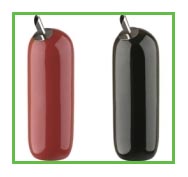A Guide to Choosing Olive Oil
 BBC’s
Dragon’s Den looking for funding for his proposal to sell his seasonal
olive oil to club members. He was not offered an investment by the
dragons but the fact that he was there at all reflects a growing
interest in different types of oils both for cooking and for dressing
salads.
BBC’s
Dragon’s Den looking for funding for his proposal to sell his seasonal
olive oil to club members. He was not offered an investment by the
dragons but the fact that he was there at all reflects a growing
interest in different types of oils both for cooking and for dressing
salads.
Types of Olive Oil
Olive oils are graded by production method, acidity and flavour. For most of the olive growing World, grading standards are set by the International Olive Oil Council (IOOC). The main categories are:
Extra Virgin Olive Oil The term virgin means that the oil has been extracted by only physical means and that no chemical processes are involved. Virgin olive oil comes from the first pressing. Extra virgin olive oil must contain oleic acid levels of below 0.8g per 100g and meet various taste criteria. This oil is ideal for use in an olive oil drizzler to drizzle on salads. Absolutely fine for cooking but cheaper alternatives are available.
Virgin Olive Oil This oil must be extracted by the same type of process as extra virgin olive oil but it can have a higher acidity level of up to 2g per 100g. There are also flavour standards. It may have sufficient flavour to use cold but is also suitable for cooking.
Refined Olive Oil As the name suggests it is a refined version of virgin olive oil. No solvents have been used to collect the oil but it has been refined with the use of charcoal and other filters. There are acidity and flavour regulations.
Olive Oil A mixture of virgin olive oil and refined olive oil. Again with acidity and flavour regulations.
Tasting Olive Oil
Throughout his visit to the Den, Michael North repeatedly drew parallels between olive oil and wine. He showed the Dragons how to taste two olive oils. The steps were:
- Pour a small amount of the oil into a glass and warm the oil by holding the glass in your hands.
- Pour a drop onto your tongue and note the flavours (again Michael used terms similar to those used to describe some wines)
- Slurp the oil backwards and forwards in your mouth and notice the flavours.
Factors which can affect the flavour, texture and colour of olive oil include:
- Olive variety
- Growing conditions including soil and location
- Weather whilst the olives are growing
- Timing of harvest
- Ripeness of olives
- Length of time from harvest to pressing
- Pressing method used
- Packaging and storage of the oil
 Storing Olive Oil
Storing Olive Oil
One of the main points which Michael North made in the Dragons’ Den is that olive oil is a fresh, seasonal product which should ideally be used soon after it is produced. With the very fresh oil which the Dragons tasted, Michael drew their attention to the fact that no oily taste was left in their mouth. This contrasted with an older oil which they tried.
For most people obtaining seasonal olive oil may not be practical and Dragon Deborah Meaden was clear that she wants to buy oil when she needs it rather than having to fit in with the seasons.
Buying smaller bottles gives you the chance to use the oil before it becomes rancid. You can also help to keep your olive oil fresh for a long as possible by:
- Storing it in the dark
- Protecting it from excessive heat
- Preventing air getting into the bottle with a stopper or a cap
Using containers made out of materials which will not react with the oil e.g. tinted glass, porcelain or stainless steel